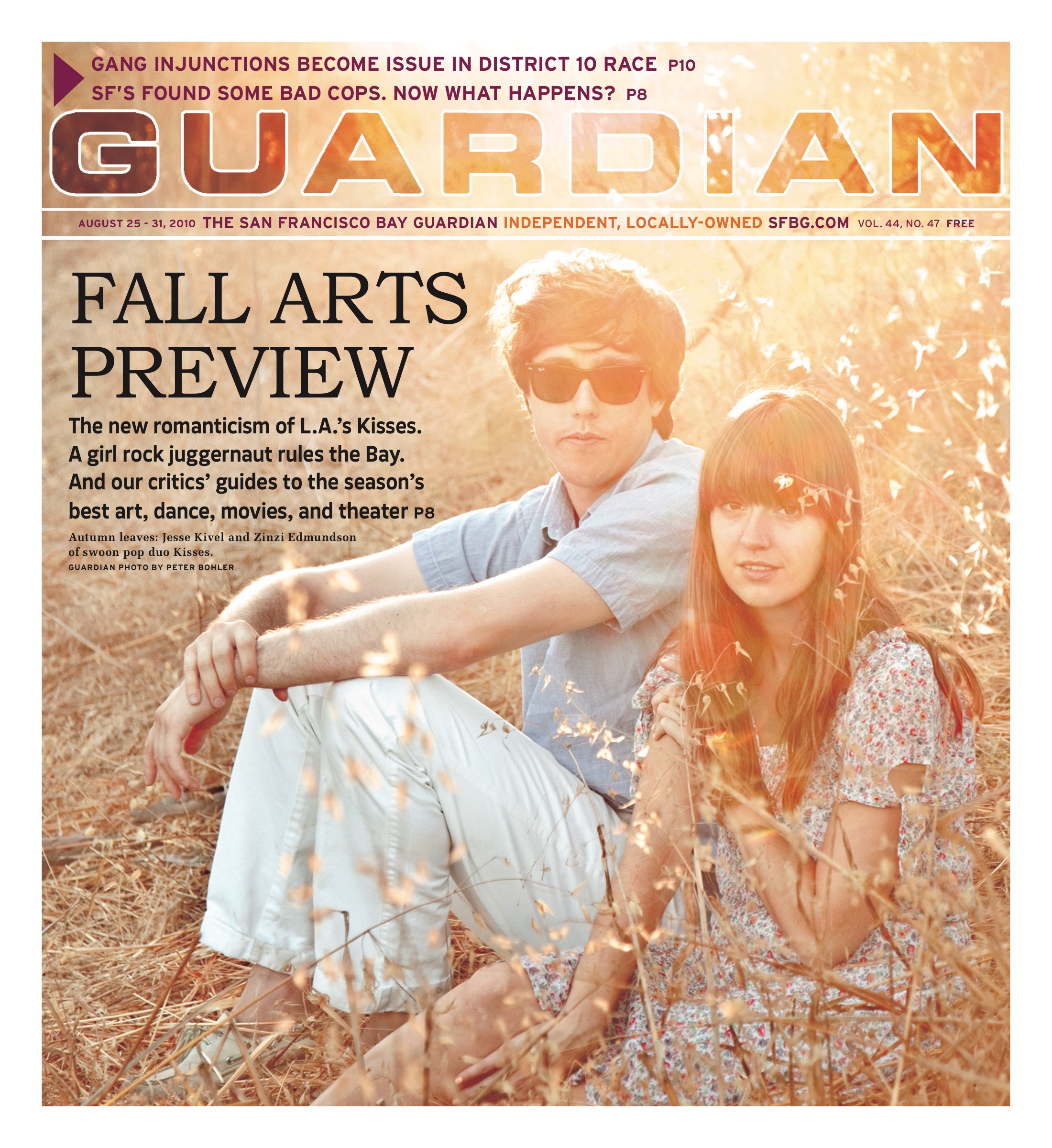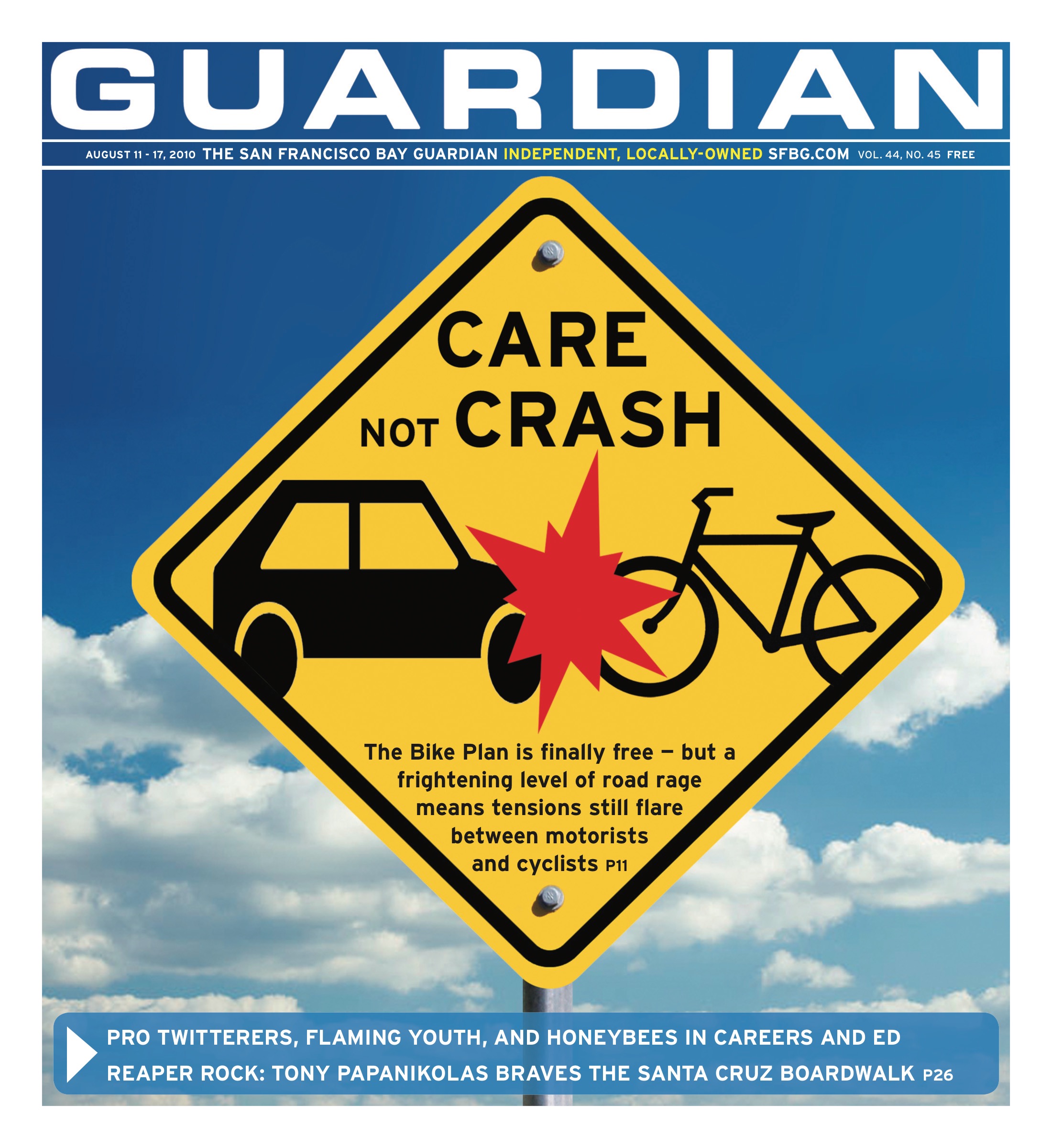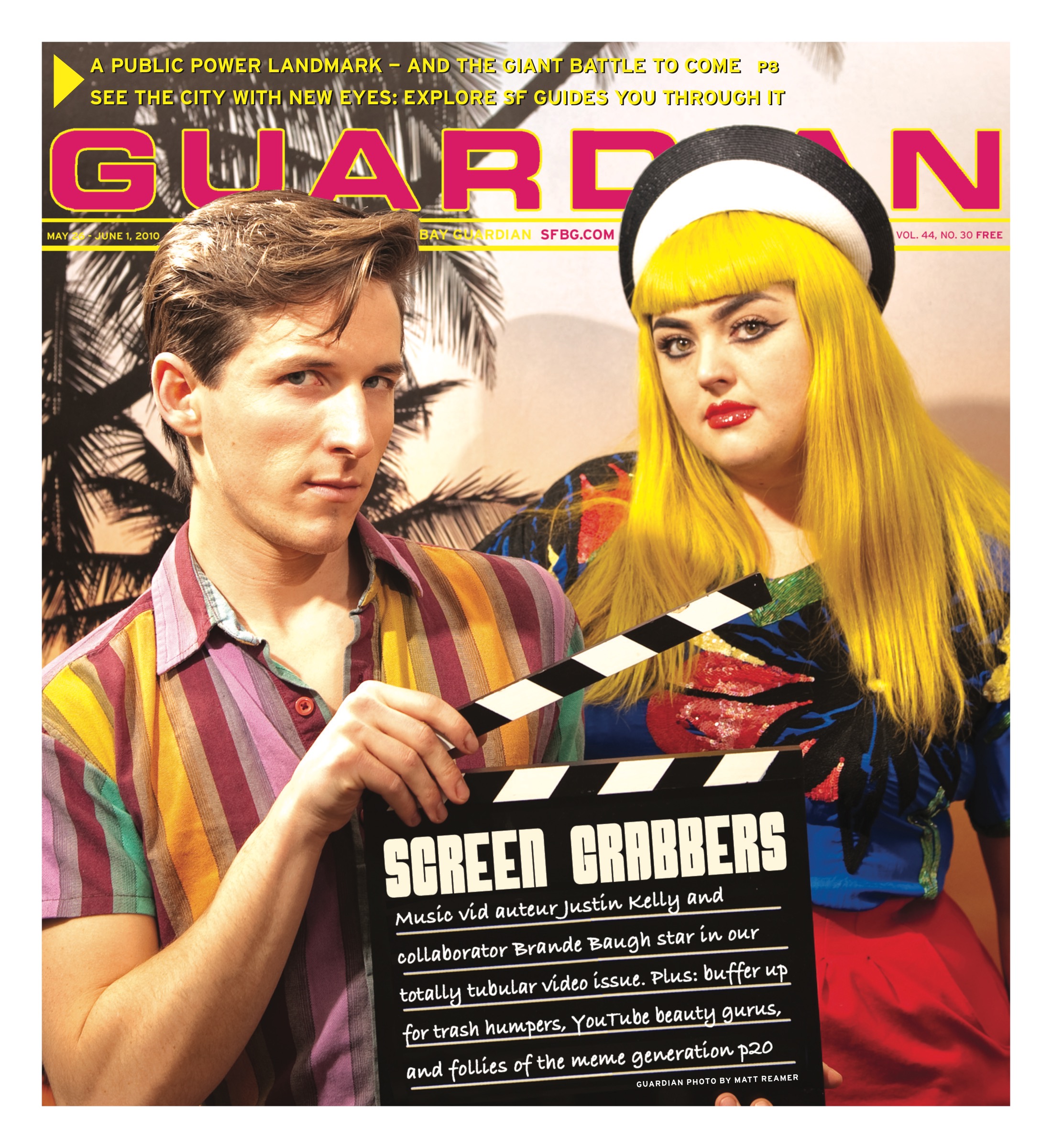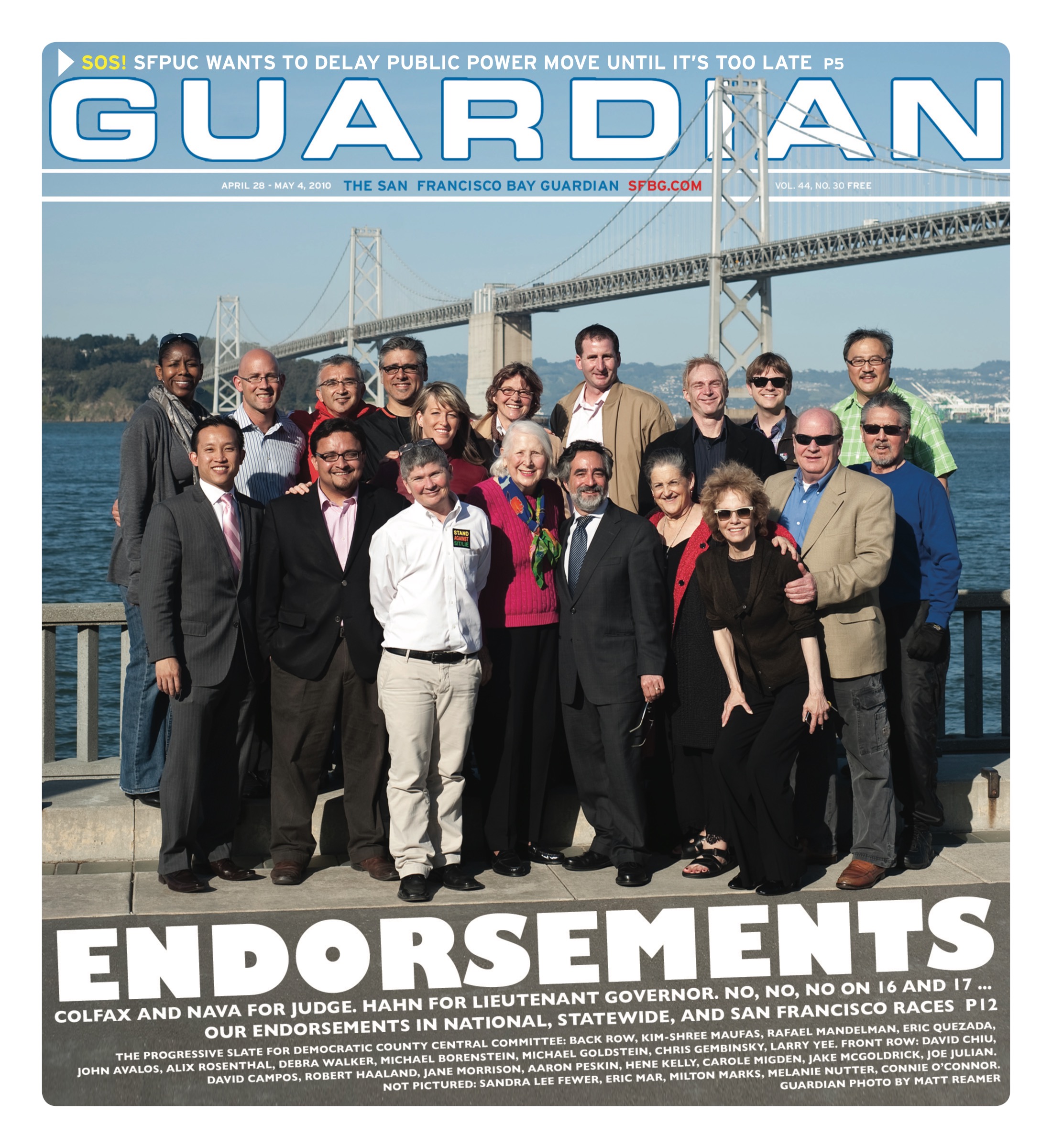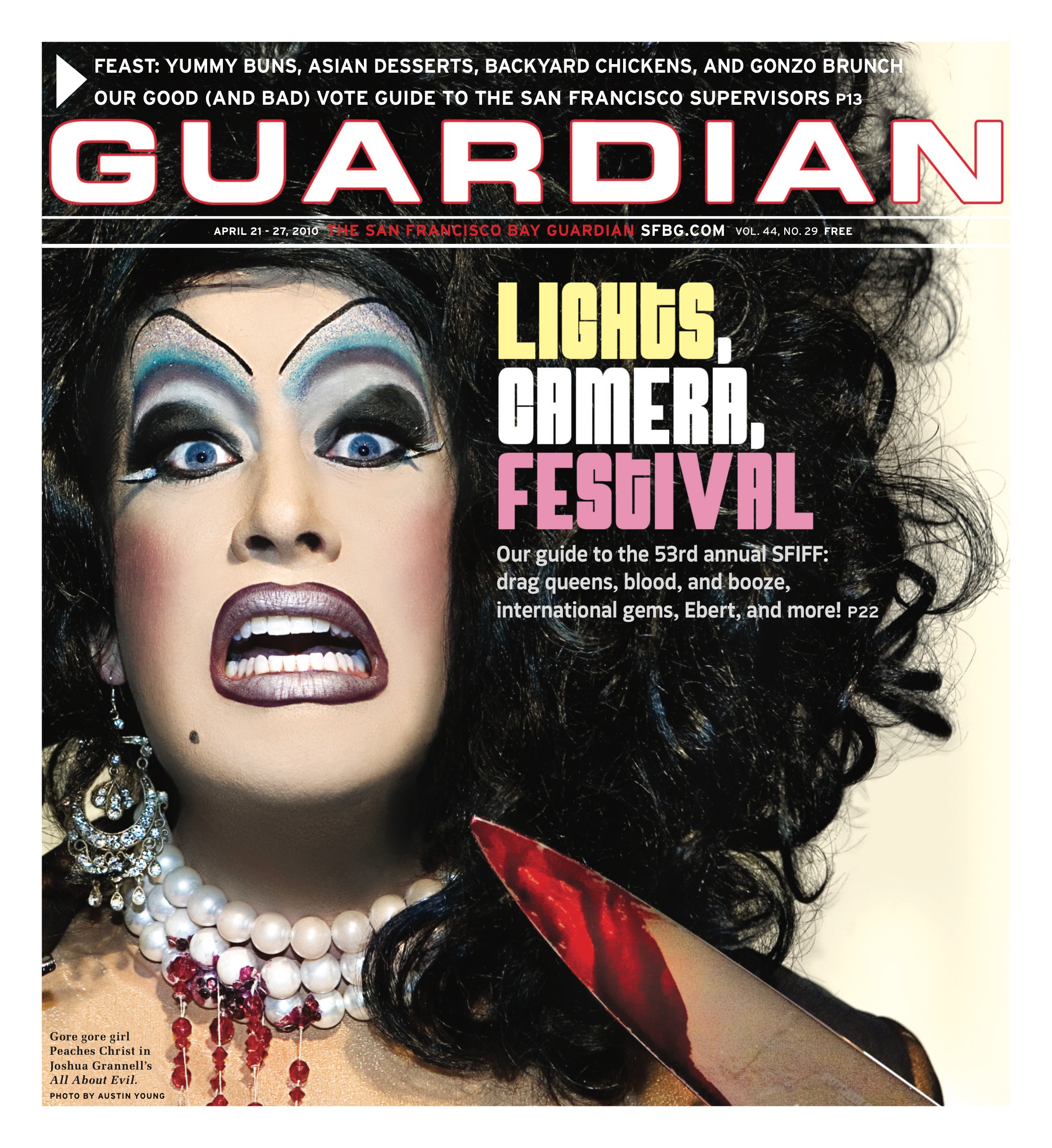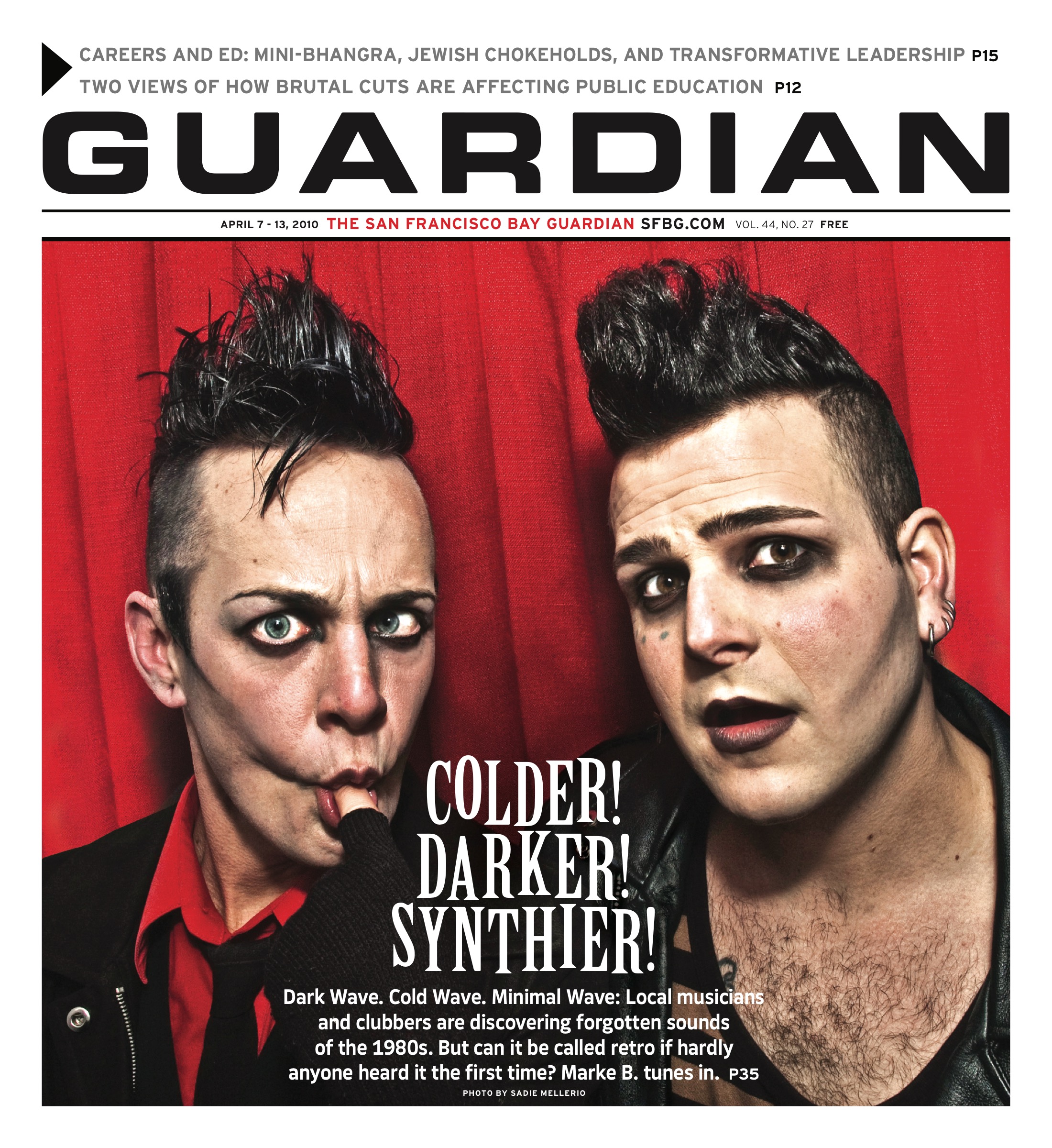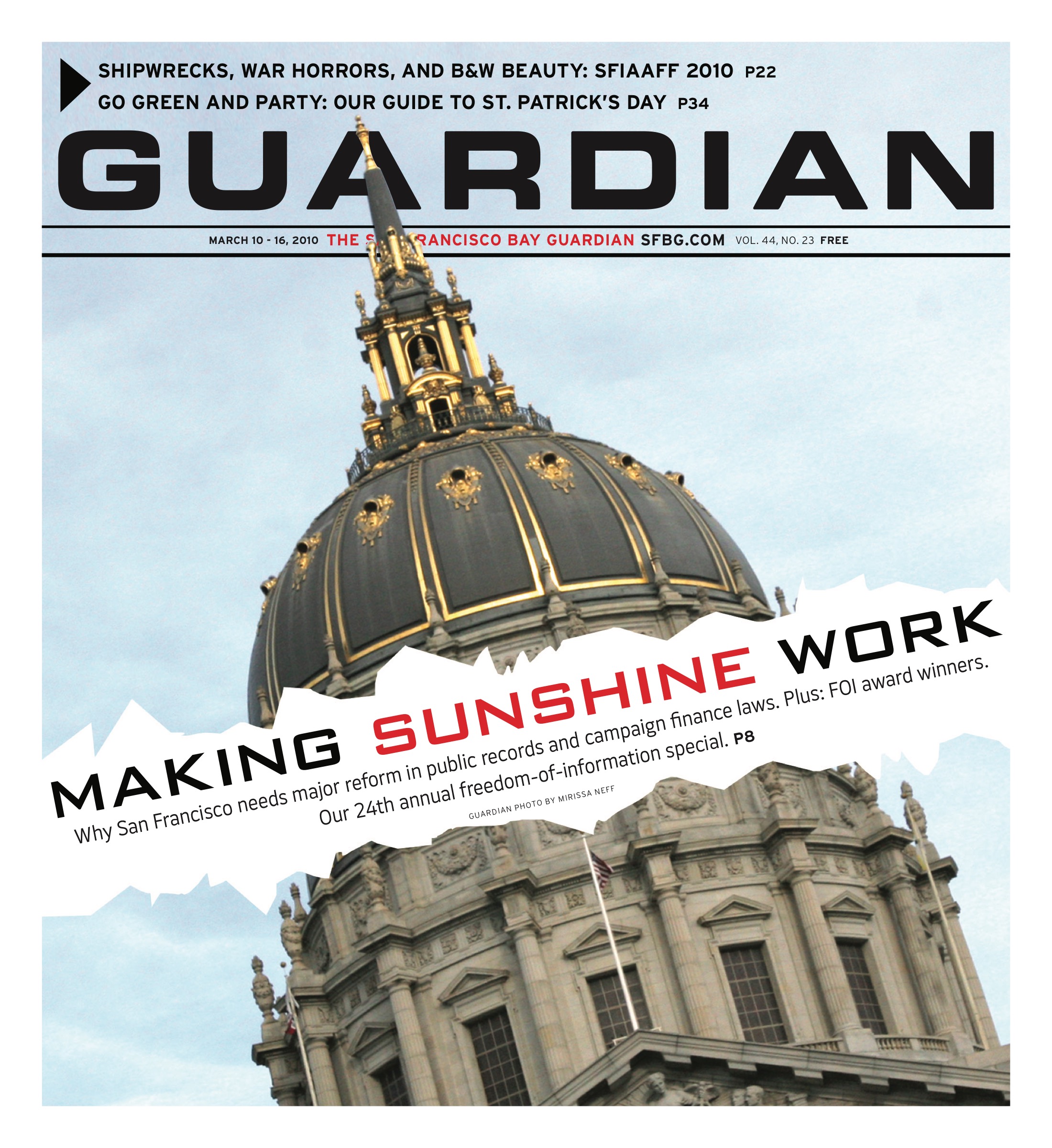arts@sfbg.com
FALL ARTS/MUSIC When I last looked at the state of all-female bands in 2006, Sleater-Kinney, Destiny’s Child, and Le Tigre had hung up their guitars, mics, and samplers. Since then, the Bay Area has produced a motherlode of female-dominated rock outfits — including Grass Widow, the Splinters, Brilliant Colors, the Twinks, the Sandwitches, the Sarees, the Glassines, and Shannon and the Clams — while frontperson Dee Dee (née Kristin Gundred) of the Dum Dum Girls has moved back to SF, where she grew up.
Is there a girl band revolution on the horizon? Mainstream charts don’t reflect a change, despite the rising national profiles of the Dum Dum Girls, Vivian Girls, Frankie Rose and the Outs, and the all-female band backing Beyonce during her last tour. Yet since 2007, waves of all-female bands have been breaking locally — outfits often informed by girl groups, as well as garage rock and generations of punk. Jess Scott of Brilliant Colors told me she recently broached this subject with riot grrrl vet Layla Gibbon, editor of Maximum Rocknroll: “I think people are writing about the music itself, which is exciting. I’m always for new music, and I’m doubly for girls in music.”
But just because girl bands are becoming more of a norm doesn’t mean that sexism has evaporated, much like the election of Barack Obama hasn’t dispelled racism. “When we go on tour in the South or Midwest or anywhere else, you realize how different it is,” says Lillian Maring of Grass Widow. “You’re loading into the venue and hearing, ‘Where’s the band?’ ‘Heh-heh, it’s us — we’re the band.’ ‘You’re traveling by yourselves?'” She looks flabbergasted. “Are you fucking kidding me?”
Intriguingly, the very idea of foregrounding gender, above music, chafes against some musicians. “There’s definitely a history of women being objectified in all kinds of visual culture,” says Grass Widow’s Hannah Lew. “We’re thoughtful people who work hard at writing songs and are trying to challenge that whole system of objectification, so it would kind of be an oxymoron if we were to capitalize on the idea of being a girl group. Our gender is an element of what we do, but the first thing is our thoughts and our music.”
Still, others see gender as an inextricable part of writing music, often collaboratively, about their own experiences. “I think it’s a powerful thing to be a troupe of women together writing music,” says the Splinters’ Lauren Stern. “The lyrics are totally different, and there are certain things that a woman writer conveys differently.” Her bandmate Caroline Partamian believes the popularity of all-female combos like the Vivian Girls may be “subconsciously giving girl bands more power to keep writing songs and keep playing shows.”
The Girlschool class of 2010, would probably agree that a new paradigm is in order. Scott, for instance, confesses she’d rather align herself with politically like-minded labels like Make a Mess than simply other all-female bands that “want the same old things tons of guy bands have wanted.” The same old won’t get you a passing grade.
MEAT THE BAND: GRASS WIDOW
The dilemma of so many women’s bands — to be on the CD or LP cover, or not to be — is beside the point when it comes to SF’s Grass Widow, hunkering down over burgers and shakes in the belly of a former meatpacking building at 16th and Mission streets, in a onetime-meat locker-now-practice space jammed with drum kits, amps, and gear.
“I think it’s annoying to try and sensationalize girl groups, but at the same token maybe it’s cool because it might normalize, a bit, the idea of gender,” says bassist-vocalist Hannah Lew. “But it’s definitely the thing we don’t like to talk about first. I almost don’t want to use our image in anything. People are automatically, ‘They’re hot! Omigod, that one is hot!'”
The cover of Grass Widow’s second, newly released album, Past Time (Kill Rock Stars), appears to sidestep the issue, until you look closely and notice Lew, guitarist-vocalist Raven Mahon, and drummer-vocalist Lillian Maring poking their heads out a car window in the background. “We’re very blurry, but we could be really hot!” Lew jokes. “We probably are really hot!”
Some consider Grass Widow hot for altogether different reasons: the band is often brought up by other all-female local bands as a favorite, and Past Time stands to find a place beside such influential groups as the Raincoats for its blend of sweetness and dissonance, spare instrumentation and sing-out confidence, and interwoven vocals. In some ways, Grass Widow sounds as if it’s starting from scratch in a post-punk universe and going forward from there, violating rockist convention.
Are they, as their name might suggest, mourning an indie rock that might or might not be dead? Well, when Lew, Mahon, and Maring started playing together in 2007 under the moniker Shit Storm (“It was a self-fulfilling prophecy, like the facial tattoo of band names!” says Lew), they probably couldn’t predict how sadly apropos Grass Widow — a centuries-old phrase referring to a woman whose husband is away at sea or war or on duty — would become. Last year, among other events, Lew’s father, noted SF Rabbi Alan Lew, passed away. “We took a six-month break during this intense grieving period, and it was strange to come out of it and think, we’re in a band called Grass Widow,” Lew says now. “And we were grass widows to each other! Then playing again, it felt right to be in a band like that — it took on this other meaning.”
In a similar way, the group regularly works together to transform their experiences, thoughts, and dreams through allegory into song lyrics — and for its release party, it plans to incorporate a string section and a 35-lady choir. “We’re not a girl group mourning the loss of our boyfriends and waiting for them to return,” muses Mahon. “It’s more like we’re working together to create and we’re functioning just fine that way.”
BRIGHT STARS: BRILLIANT COLORS
“We’re associated with a lot of bands that came along a few years later, but when I started writing songs three or four years ago, it was a wasteland,” says Jess Scott, Brilliant Colors’ vocalist, guitarist, and songwriter. “It was really hard to find people who wanted to play pop, not hardcore. It seems like a given now, but it was hard to find people who were into Aislers Set.”
Scott’s tenacity and focus comes through — loud, clear, and as vivid as the brightest hues in your paint set, and the most resonant melodies of Aislers Set — on Brilliant Colors’ 2009 debut, Introducing (Slumberland). Her breathy vocals and rhythm guitar — a crisp combination of post-punk spunk and drone — bound off drummer Diane Anastacio’s frisky, skipping beats and bassist Michelle Hill’s simple, straight-to-the-gut bass lines like the most natural thing in the world, recalling punk classics by early Buzzcocks and Wire as well as later successors Delta 5 and LiliPUT and riot grrrl-era kin Heavens to Betsy and Huggy Bear.
Scott has been writing songs since she was 15, which, full disclosure, was around the time I first met her, the daughter of two moms, one of whom I worked with. At the time, her sound was softer, more melodic, and at times weirder than the punk outfits that frequented 924 Gilman Street Project, her pals’ preferred hangout. Nevertheless, Brilliant Colors has gone on to somehow fuse Gilman’s political-punk commitment with Scott’s obsession with perfecting pop songcraft.
“We get offers to do cheesy things and we don’t do it. We’re extremely liberal punk kids, y’know,” explains Scott, who sees all of her band’s numbers as love songs, with a few intriguing angles: “Motherland,” say, is “an overtly feminist song about solidarity between women,” while “Absolutely Anything” concerns vaginal imagery in art.
Call Brilliant Colors’ inspired tunes a true reflection of its music-obsessed maker: Scott studied political science and economics as an undergraduate at Mills College, and arts journalism as a fellow at University of Southern California, and she regularly writes for Maximum Rocknroll. She also runs a cassette label, Tape It to the Limit.
“You could say we’re conscious of who we play with and where we play and what we say,” says. That means saying “no way” to playing at chain clothing stores such as Top Shop, though she humbly adds, “I don’t want to seem ungrateful or rude about it, but we want to stick to shows that are all ages and cheap.”
Snackable: The Sandwitches
Give naivete a good, hard twist and you get something close to the rock ‘n’ roll-primitive originality of the Sandwitches. Little wonder that two of the winsome ‘Witches, vocalist-guitarists Grace Cooper and Heidi Alexander, were once backup vocalists for the Fresh and Onlys — the Sandwitches’ music rings out with the ear-cleansing clarity of smart girls who understand the importance of preserving the best, raw parts of their innocence, even amid the pleasures and perils of age, wisdom, snarking hipsters, and intimidating record collections.
One of the SF trio’s recent tunes, “Beatle Screams,” embodies that fresh, crunchy, approach: its lo-fi echo; lumbering, click-clack drums; and sad carnival-organ sounds are topped off with the comic pathos of girlish, ghoulish shrieks from the depths of groupie hell.
Live, the Sandwitches come across as offhand, upbeat, and surprisingly passionate, playing music that harks to lonely teardrops, mom ‘n’ pop low-watt radio stations, the Everlys and Gene Pitney, with a twinge of country and a dose of dissonance. The trio’s recordings have a nuanced view of love and lust. They assume the perspective of infatuated naifs on “Idiot Savant,” and warble “Fire … I fill the room, I fill the womb,” on “Fire” from the 2009 debut album, How to Make Ambient Sad Cake (Turn Up). Produced by the Fresh and Onlys’ Wymond Miles, the new Sandwitches EP, Duck, Duck, Goose! (Empty Cellar/Secret Seven) plunges even deeper into the shadows, tackling “Baby Mine,” Fresh and Onlys’ honcho Tim Cohen’s “Rock of Gibraltar,” and other eerie lullabies with confidence and tangible vision.
The Sandwitches materialized two years ago when Alexander and drummer Roxy Brodeur began playing together. “She said she really liked the way I drummed and we should play music sometime,” recalls Brodeur, who has also drummed in Brilliant Colors and Pillars of Silence. Alexander had also been playing with Cooper, and it seemed only natural for the three to join forces.
Brodeur was adept at following along: “I play to the vocals a lot, and it depends on the song because Grace and Heidi write in pretty different styles — with Grace it’s lighter and jazzier and with Heidi it’s a little heavier and thumpy.”
GRASS WIDOW
Sept. 10, 7 p.m., all ages
Cyclone Warehouse
Illinois and Cesar Chavez, SF
www.myspace.com/grasswidowmusic
POSITIVELY TEMESCAL: THE SPLINTERS
What do Canadian tuxes, temporary tats, TLC, and touring by pickup truck have in common? They’re all pleasures, guilty or not, for the Splinters. The soon-to-be-bicoastal Bay Area all-girl combo is all about fun and friendship, gauging the laughter levels as guitarist Caroline Partamian and vocalist-tambourine player Lauren Stern sip PBRs by the hideaway fireplace in the back of Oakland’s Avenue Bar. Some other choice subjects: seedy green rooms, messy Texas shows, honey-dripping Southern accents, and bandmates that make their own thongs.
“Sometimes being girls has gotten us out of trouble,” says Stern, chuckling. Like that time at an Austin house party when the Splinters got grossed out by the bathroom and decided to go pee next to their truck instead. “We had baby wipes,” Partamian explains. “And we had the truck doors open.”
“So we’re all squatting in a row, and this guy walks out with his dog and his friend,” continues Stern, “and he’s like, ‘You guys are peeing in front of our house!'” Girlish oohing and aahing over his pooch saved the day, and the aggrieved dog walker ended up replacing the truck’s brake pads at a drastic discount.
Likewise, positivity and camaraderie infuse the Splinters’ all-fun debut, Kick (Double Negative), though “Sea Salt Skin” injects melancholy into the garage-rocking shenanigans and “Oranges” levels its gaze at girl-on-girl violence with a withering Black Sabbath-style riff. “Cool” and “Dark Shades” flip the dance-party ethos on its side, playfully critiquing the hip crowd like wiseacre modern-day Shangri-Las. No surprise, then, that these women were friends and fellow students at UC Berkeley before they started playing together in late 2007, inspired by Partamian’s four-track birthday gift. The first show was an Obama house-party fundraiser. “It was $5 for a 40 and a corn dog,” Stern remembers.
The ensemble has turned out to be much more than an end-of-school lark. A New York City move is next for Stern and Partamian — the latter will be starting the museum studies graduate program at NYU. But the Splinters will stay together, in part for four female superfans who sing along to all the Splinters’ songs, and for a Bristol, U.K. father and son who have bonded over their affection for the group.
“I don’t know, we just love playing music together,” says Partamian.
“It’s so much fun,” Stern adds. “Almost in an addictive way.”
YOUNG AND FUN: THE TWINKS
Whether you see the term as sweet talk or a slam, the Twinks’ name couldn’t be more appropriate. After all, as drummer Erica Eller says with a laugh, “We’re cute and we like boys!”
True to form, they’re young — the foursome’s first show took place last month — and fun. The Twinks are all-girl, rather than a band of adorable and hairless young gay men. Their sugar-sweet, hip-shaking rockin’ pop unabashedly finds inspiration in the first wave of girl groups — vessels of femininity and Tin Pan Alley aspiration such as the Crystals, the Shirelles, the Dixie Cups, and the Shangri-Las. But in the Twinks’ case, girls, not the producers, are calling the shots. Tunes like “Let’s Go” and “There He Was” are tracked by the group on a portable recorder and overdubbed with Garage Band. It’s a rough but effective setup, capturing keyboardist and primary songwriter Kelly Gabaldon, guitarist Melissa Wolfe, and bassist Rita Sapunor as they take turns on lead vocals and harmonize with abandon.
The band came to life amid an explosion of creativity, when Gabaldon, who also plays in the all-girl Glassines with Eller, wrote a slew of songs last winter. “All of a sudden I had a burst of inspiration,” Gabaldon marvels. “I’d email them a new song every day.” The numbers seemed less suited to the “moodier, singer-songwriter” Glassines, so Gabaldon got her friend Wolfe and finally Sapunor into the act.
Says Gabaldon: “I started listening to a lot more oldies music than I had been before.”
“We also went to a bunch of shows in the past year,” adds Eller as the group sits around the kitchen table at her Mission District warehouse space. “Shannon and the Clams, Hunx and His Punx, a lot of local bands, for sure.”
“I got influenced by Girls,” interjects Gabaldon.
Eller: “All these concerts going on — Nobunny — “
“We went to a lot of shows in the past year!” says Gabaldon. “It was like, ‘We want to do that!'<0x2009>”
Now the Twinks are just trying to play out as much as they can and record their songs. They work ties and other menswear delights into their stage getups, and drink shots of Chartreuse before each show. “I think we all have similar ambitions,” says Sapunor, “but there’s a sense of lightness and playfulness and fun, so it doesn’t seem like work. I think that’s how female culture plays into the overall experience for us, and hopefully for audience members, too.”
BRILLIANT COLORS
With Milk Music and White Boss
Sept. 9, 9 p.m., $7
Hemlock Tavern
1131 Polk, SF
(415) 923-0923
GRASS WIDOW
Sept. 10, 7 p.m., all ages
Cyclone Warehouse Illinois and Cesar Chavez, SF www.myspace.com/grasswidowmusic

